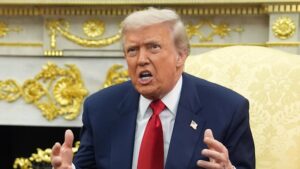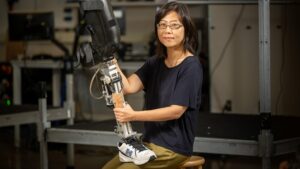
The Chinese Communist Party (CCP) is intensifying its military modernisation efforts, focusing on transforming the People’s Liberation Army (PLA) into a world-class force capable of asserting control over Taiwan and beyond. Under the leadership of Xi Jinping, the PLA is being equipped with advanced weaponry and strategic capabilities, reflecting the party’s broader ambition to reshape the geopolitical landscape, particularly in the Indo-Pacific region.
Xi has articulated a vision for the PLA that includes a focus on becoming a major maritime power by integrating military and civilian industries through a strategy known as military-civil fusion. This approach aims to enhance the PLA’s operational effectiveness and extend China’s influence over adjacent seas while simultaneously deterring foreign military presence, particularly from the United States.
Strategic Restructuring and Objectives
To achieve these ambitious goals, Xi has restructured the PLA, reducing the number of military regions from seven to five theatre commands. This consolidation is designed to create greater operational coherence among the services and streamline command structures. The PLA’s modernisation strategy emphasizes three core objectives: informationisation, intelligentisation, and the capability to engage in high-intensity warfare through integrated operations across multiple domains. By 2027, Xi aims for the PLA to be prepared to take decisive military action, particularly regarding Taiwan, which he views as an integral part of the People’s Republic of China (PRC).
Despite these advancements, there are indications that Xi lacks confidence in the loyalty and competency of the PLA’s senior leadership. He has implemented a continual rotation of personnel and organizational changes, suggesting a deeper mistrust of the military apparatus. While Xi maintains that the PLA is a heroic army deserving of public trust, his actions suggest a persistent doubt in its leadership and effectiveness.
Global Implications and Regional Concerns
The implications of the PLA’s modernisation extend far beyond China’s borders. Many countries in the Indo-Pacific region are grappling with how to engage with China economically while managing the escalating military ambitions of the CCP. The prevailing belief among some regional leaders is that economic ties with China, which include access to its vast markets and affordable goods, can help mitigate potential military threats. Yet, the CCP’s assertive global security and development initiatives signal that mere economic engagement may not suffice to counter its ambitions.
For Australia, these developments present significant challenges. The Australian government is now focused on enhancing its military preparedness and contingency planning to deter any aggressive moves by the CCP. The modernisation of the PLA raises critical questions about the balance of power in the region and the strategies that neighboring nations must adopt to safeguard their interests.
As the PLA continues its transformation, the effectiveness of this military modernisation will play a crucial role in determining China’s future trajectory on the world stage. Observers will closely watch the interplay between military capabilities, leadership dynamics, and the broader geopolitical landscape in the years to come. The ongoing narrative of modernisation not only shapes China’s military aspirations but also influences global security paradigms.






